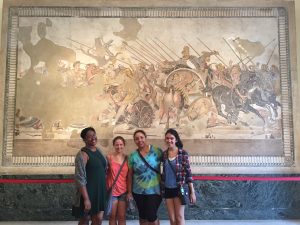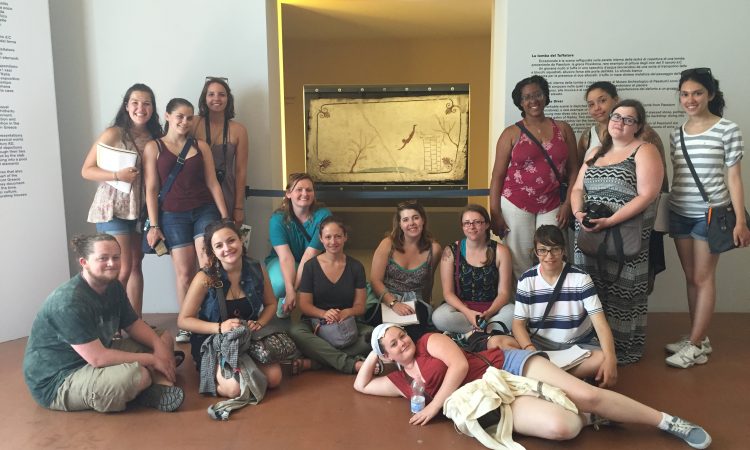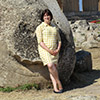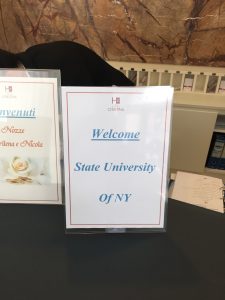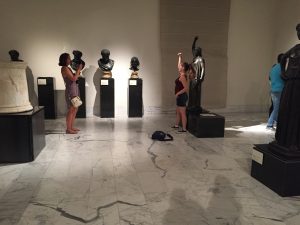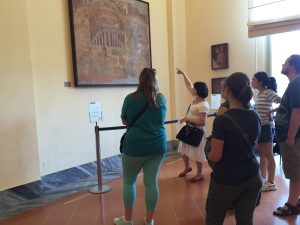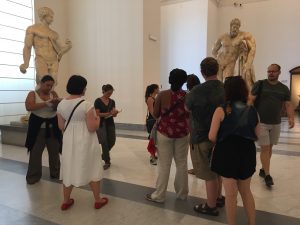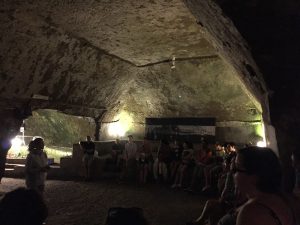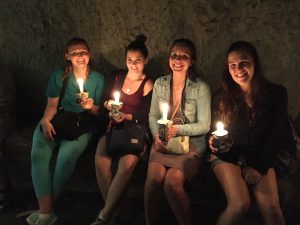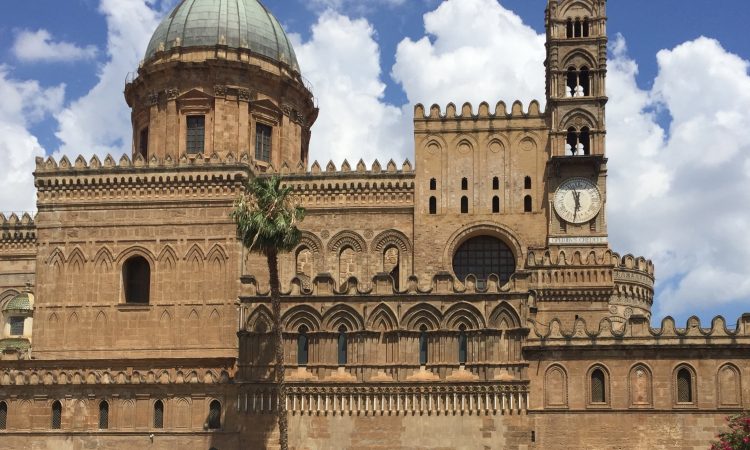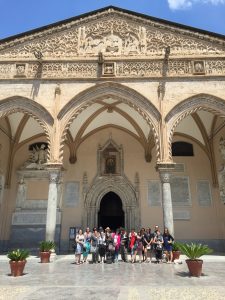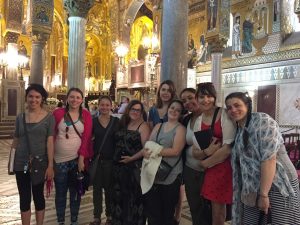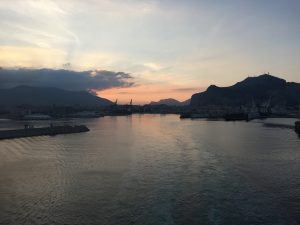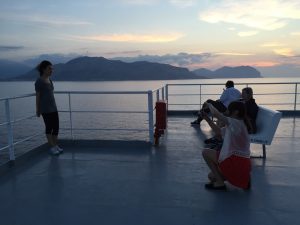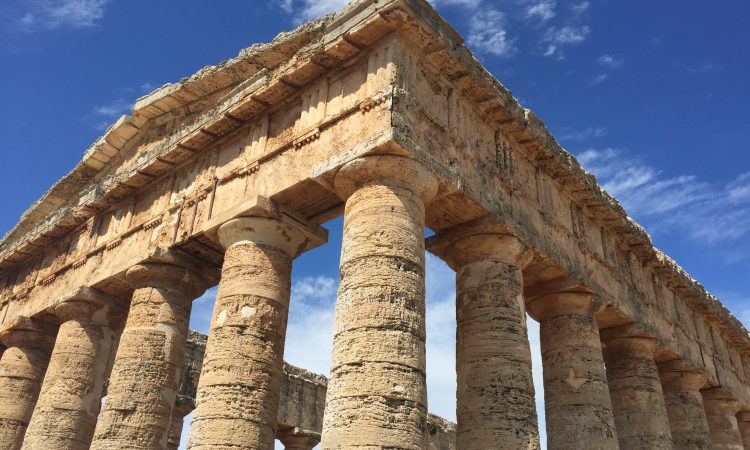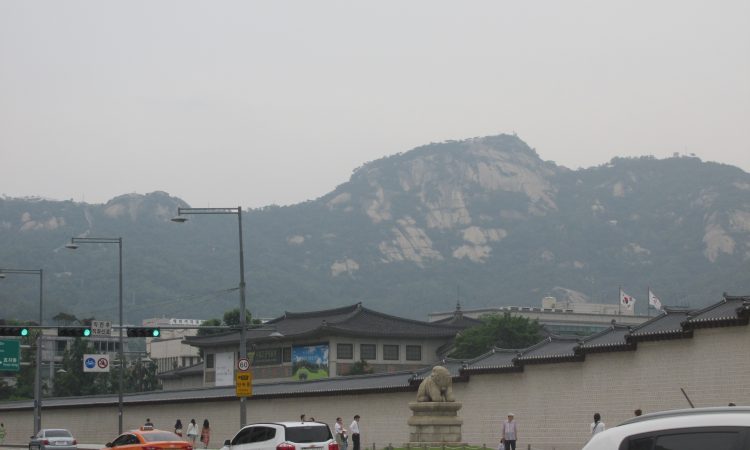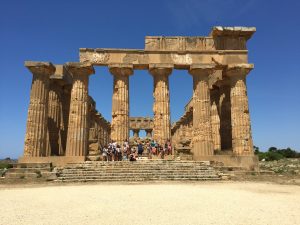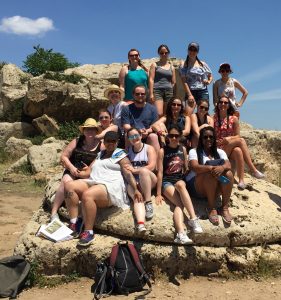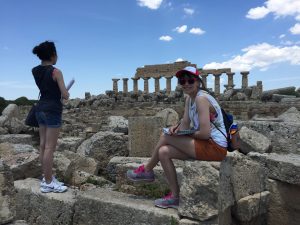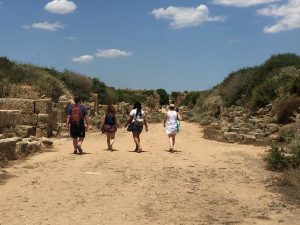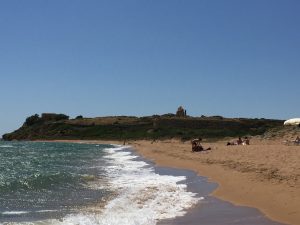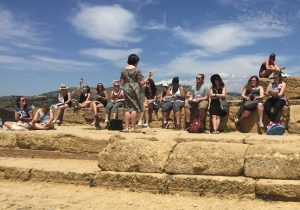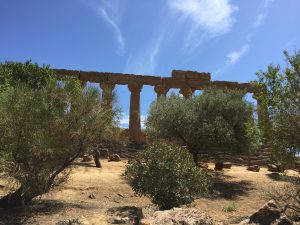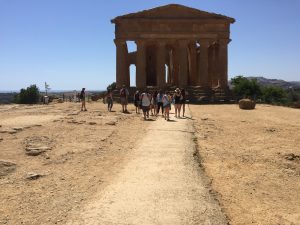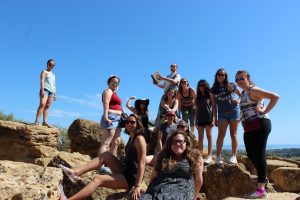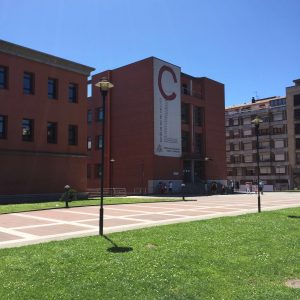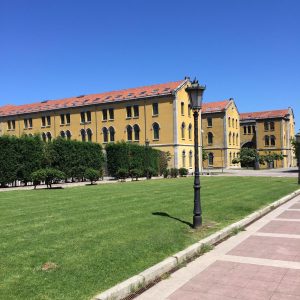While the focus of this course is the impact that Greeks had upon ancient Italy, it is essential to remember that they hardly lived there in isolation. Today we learned about other groups with whom the Greeks interacted in western Sicily. We started with a trip to the island of Mozia, which was settled by the Phoenicians, later called Carthaginians after their main colony on the coast of north Africa, which became the seat of their empire after they were pushed out of their homeland in the Levant (modern Lebanon and Syria) by the fifth century B.C. The Phoenicians were gifted seafarers who began exploring the Mediterranean from 1200 B.C. onwards. They tended to found cities either on rocky promontories that gave them two harbors or small islands lying off the coastline that were easy to fortify and defend in case of siege. Mozia, located just off the coast of western Sicily, is an example of the latter type. The name “Phoenician” comes from the Greek word for the purple-red of the precious dye that the Phoenicians were famous for producing from the glands of the murex, a sea crustacean. Preferring not to farm, the Phoenicians were skilled craftsmen trading their products for foodstuffs and raw goods, but their greatest invention, which affects us today is their alphabet, which is the basis for the Greek and later Latin letters that we still use. To varying degrees, the Phoenicians/Carthaginians controlled the western part of Sicily until they were expelled by the Romans during the Punic Wars in the third century B.C.
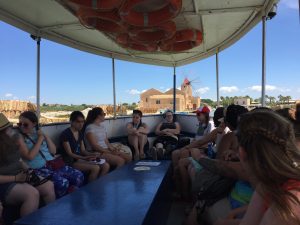
Taking the ferry to Mozia (note the windmill that serves the salt works)
Today, Mozia is accessed by a small ferry that takes you by the salt pans of the area, where sea salt is harvested through evaporation. Sadly, during our visit today the usual heaps of glittering white sea salt on the docks were not to be seen. In antiquity, Mozia was connected to the Sicilian mainland by a submerged causeway, just a few inches below the water’s surface, so that when it was in use, it appeared as though carts and horses were riding upon the waves. While ingenious, this causeway had its disadvantages, making it easier for Dionysius, a tyrant of Syracuse, to sack the city in 397 B.C. and causing the main harbor on the south of the island to silt up.

Admiring the Mozia Charioteer
Mozia was first settled by the Phoenicians during the eighth century B.C. After Dionysius’ siege, it never flourished again to the same extent and was eventually abandoned. In the late 19th century, the island was purchased by Joseph Whitaker, whose family were distinguished Marsala wine merchants. Besides being a distinguished ornithologist, he was an amateur archaeologist, and he began the island’s excavation, which continues even today (which we witnessed first hand!). The island now belongs to a foundation named after Joseph Whitaker, and the museum on the island is located in his original home, displaying the material uncovered at the site. The greatest pride of place goes to the museum’s tour de force sculpture of a young male athlete, the Mozia Charioteer, carved from imported Parian marble and likely produced ca. 470-460 B.C. It was found intentionally buried, perhaps to protect it during Dionysius’ attack, and it may itself have been a spoil of war, taken from a monument dedicated to a victorious athlete in one of the Greek Sicilian colonies conquered by the Carthaginians in the late fifth century B.C.

A student presentation on Phoenician religion at the Tophet of Mozia
We then explored the island itself, visiting several excavated sacred sites including the Kothon, a man-made pool containing water from a fresh-water spring, and its neighboring sanctuary and the Tophet, a Punic sacrificial burial ground dedicated to the goddess Tanit and her consort Baal Hammon, where children, possibly the male firstborn, were sacrificed, cremated, and their remains placed into terracotta urns. Besides these sacrificial urns, over a thousand carved stone slabs were uncovered in this area featuring a variety of motifs carved in relief, either symbols of the cult of Tanit or human figures, perhaps the dedicators themselves. My intrepid budding student archaeologists even found murex shells, the remains of the famous Phoenician dye production in Mozia.
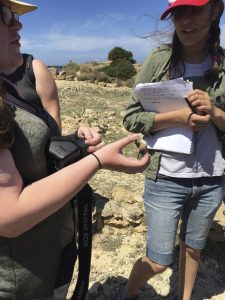
Discovering ancient murex shells used in the production of costly purple-red dye for which the Phoenicians were famous
Our second stop of the day was the site of Segesta, one of the principal centers of the Elymians, the indigenous inhabitants of the western part of Sicily. Legend says that they were led to Sicily by the Trojan prince Aeneas after the defeat of Troy by the Greeks, which eventually led to the city receiving special privileges when this part of the island was conquered by the Romans in 248 B.C. because of the Roman claim of descent from Aeneas. The Elymians had a mixed relationship with their Greek neighbors in Selinunte, often descending into conflict with one another. Segesta’s efforts to aggravate the Sicilian Greeks resulted in their entering into a treaty with Athens, promising to help fund the failed Athenian invasion of Sicily. It was this desired alliance that likely led to the construction of Segesta’s most famous landmark, the never-completed Greek temple located outside the settlement. The Elymians were very conscious of the need to impress the Athenian diplomatic mission that came to Segesta by not only demonstrating their wealth, but also their familiarity with Greek culture. The temple borrows proportions and architectural refinements found in Athenian sacred architecture of the mid 5th century B.C. One can imagine the structure being started shortly before the Athenians’ arrival in Sicily in 417 B.C. and abandoned soon thereafter when the Athenian ambitions in the west crumbled with the disastrous siege of Syracuse.

Visiting the temple at Segesta

The ancient theater of Segesta (the current state dates from the 2nd century B.C.)
The natural setting of Segesta’s ancient structures is evocative to say the least, but I was impressed by how moved the students were by their experience there, a couple stating that they never wanted to leave. Not only did we get to enjoy the surrounding natural landscape around the temple, but even more so from the ancient theater perched on top of the city’s acropolis that looks out towards the Gulf of Castellammare beyond Monte Inici, a truly breathtaking view. Since we had visited well-preserved Greek theaters already in Catania and Syracuse, I decided to mix things up a bit by having the students experience this theater in quite a different way – by actually acting in one. The night before, I divided the students up into three groups and allowed each group to pick one of three classic children’s books as the inspiration for their play: Strega Nona, Make Way for Ducklings, and Where the Wild Things Are. Each group worked together to produce a skit in which the text of the book was read out loud by a narrator while the other group members acted out the story. To be honest, I thought that the students might simply refuse to participate since it was a pretty goofy thing to do, or at best, the skits would be pretty slap-dash at best given the limited time the groups had to work on this project. Little could I have anticipated the lengths that my New Paltz colonists would go to in order to win the grand prize of free gelato for the members of the best performance of the day. (Like any ancient Greek theatrical festival worth its salt, we had three “playwrights” competing for glory.) In a nutshell, there were props, choreography, costumes, music, sound effects, American Sign Language interpretation, and more. I was truly impressed by everyone’s creativity and willingness to throw themselves wholeheartedly into the project. One my favorite traits of this particular group of students is how they fully engage with the material and the experiences at hand. This ability to embrace opportunities and try new things, even when they feel a bit afraid, makes it such a joy for me to work with these students overseas.
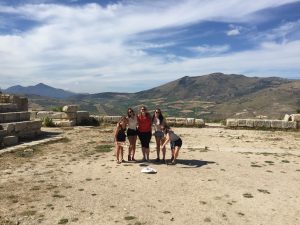
The cast of Strega Nona
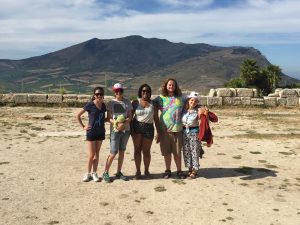
The cast of Where the Wild Things Are
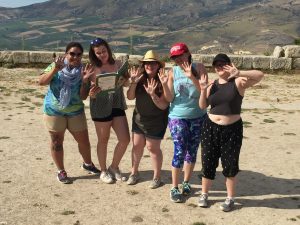
The cast of Make Way for Ducklings
I videotaped each fantastic performance on my phone, and it took all of my self-control and abdominal strength to keep from laughing and shaking the camera. We attracted a significant audience, which applauded loudly along with us. Among them was an American couple who commented to me how much they had loved reading these stories to their children and listening them to again brought back so many happy memories. We also learned how effective the acoustics were, an intentional design feature of Greek theaters, as people in the very highest rows of seats (the ancient nosebleed section) could hear every word spoken with no artificial amplification. It was clear that large portions of gelato from the café at the entrance to the archaeological park had been earned by one and all, which we enjoyed as we piled into the bus to head back to our home in Castellammare del Golfo for the night.

The view from our hotel in Castellammare del Golfo
